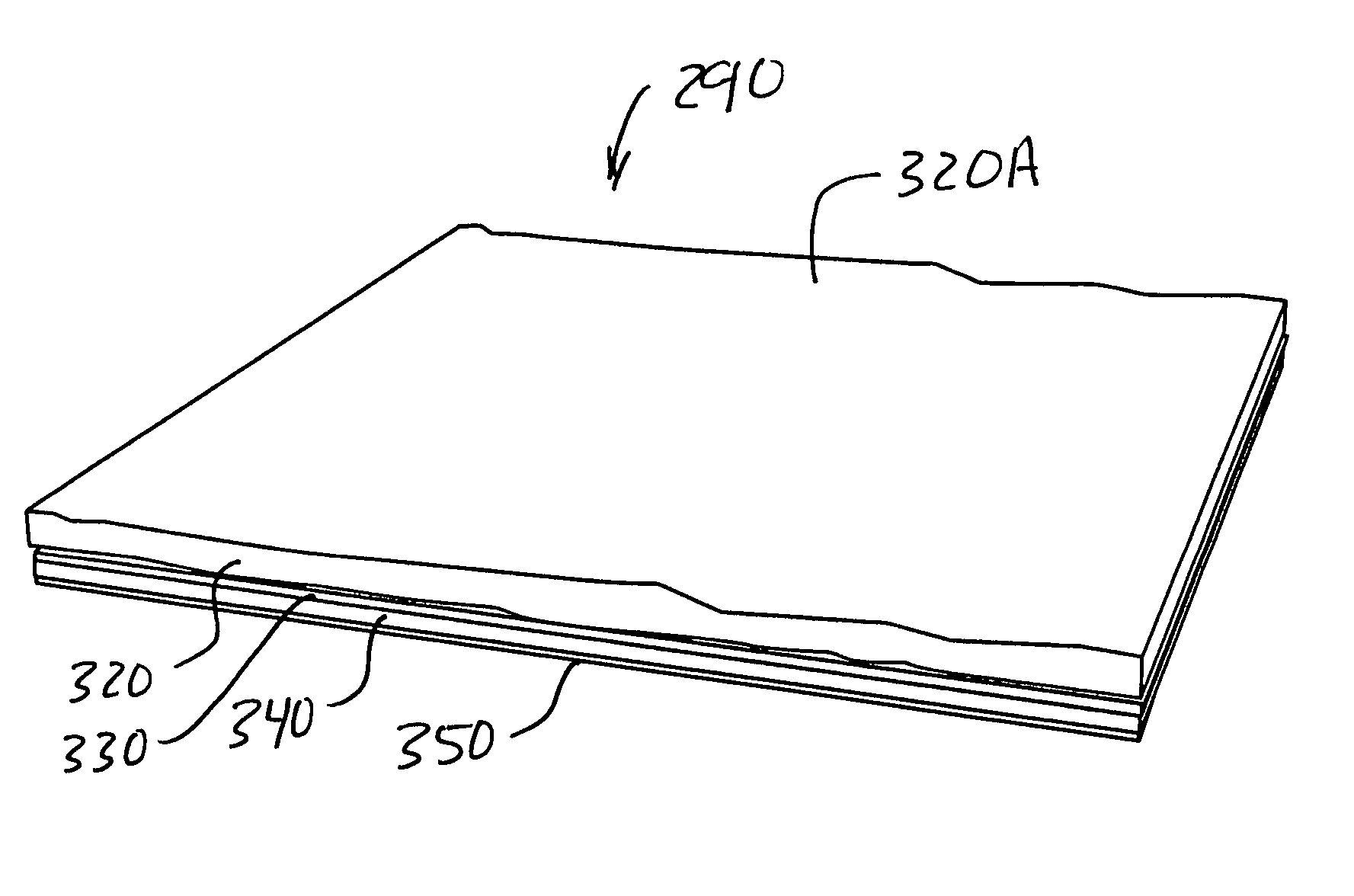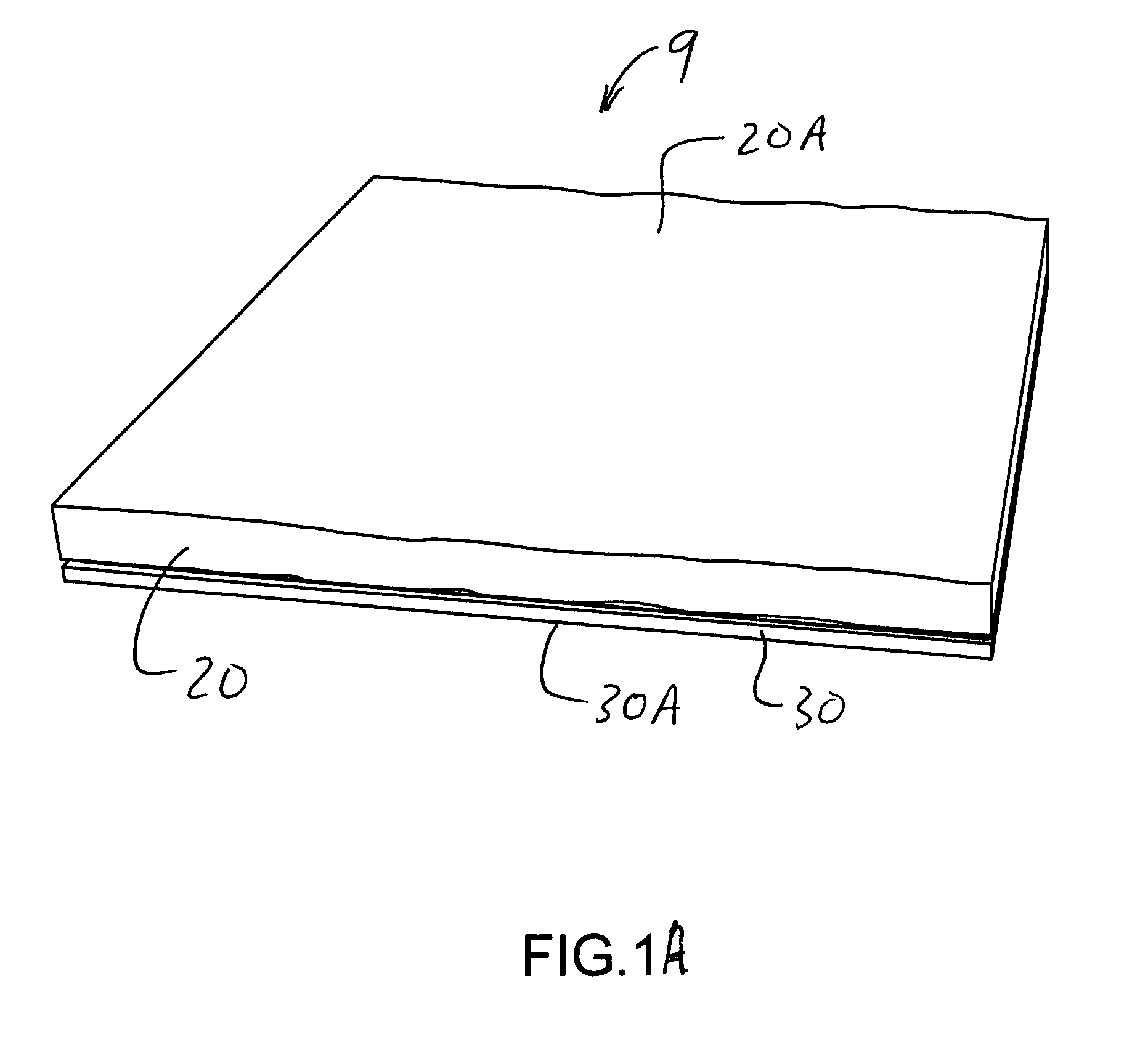Fire resistant veneer assembly for aircraft interiors
a veneer assembly and aircraft technology, applied in the direction of layered products, transportation and packaging, chemical instruments and processes, etc., can solve the problems of use of natural wood veneer in aircraft, and discoloration of decorative wood veneer, so as to limit the amount of decorative veneer removed, the effect of less flexibl
- Summary
- Abstract
- Description
- Claims
- Application Information
AI Technical Summary
Benefits of technology
Problems solved by technology
Method used
Image
Examples
Embodiment Construction
[0028]Referring to FIG. 1, an example, fire resistant 2-ply veneer assembly 10 for aircraft interiors is shown including a decorative wood veneer layer 20, a layer of phenolic adhesive 22 and an aluminum foil backing 30. The veneer structure 10 shown in FIG. 1 may be considered as a lay up which is first arranged and then pressed at elevated temperature to produce a bonded laminated structure. In FIG. 1, the edges of each layer are shown recessed within the underlying layer for ease of illustration. As can be seen in FIG. 1, a thin film of phenolic adhesive 22 is interposed between decorative wood veneer layer 20 and aluminum foil layer 30. Decorative wood veneer layer 20 may be fashioned from any one of a multitude of decorative woods. Phenolic adhesive is activated by high pressure and high temperature. Thus, the lay up shown in FIG. 1 is preferably pressed at a pressure between 150 psi and 250 psi and at a temperature between 275 degrees F. and 325 degrees F. for four to six minu...
PUM
| Property | Measurement | Unit |
|---|---|---|
| pressure | aaaaa | aaaaa |
| pressure | aaaaa | aaaaa |
| thickness | aaaaa | aaaaa |
Abstract
Description
Claims
Application Information
 Login to View More
Login to View More - R&D
- Intellectual Property
- Life Sciences
- Materials
- Tech Scout
- Unparalleled Data Quality
- Higher Quality Content
- 60% Fewer Hallucinations
Browse by: Latest US Patents, China's latest patents, Technical Efficacy Thesaurus, Application Domain, Technology Topic, Popular Technical Reports.
© 2025 PatSnap. All rights reserved.Legal|Privacy policy|Modern Slavery Act Transparency Statement|Sitemap|About US| Contact US: help@patsnap.com



